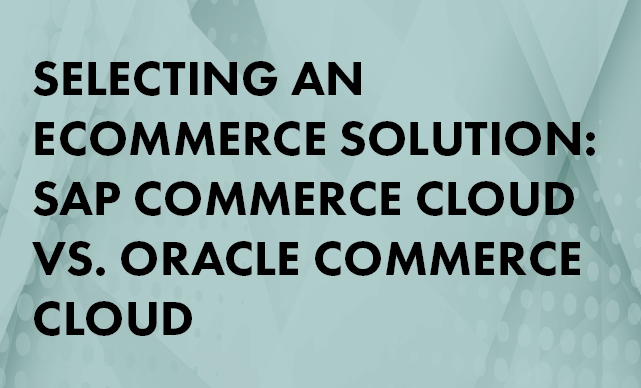Leveraging Technology for Transformational Growth
Key Takeaways
Building a Data-First Culture: Leveraging data analytics and algorithmic tools enhances supply chain efficiency, inventory management, and pricing, driving profitable growth and operational efficiency.
Integrating Advanced Technologies: Incorporating state-of-the-art tools like generative AI and robotic process automation (RPA) transforms traditional commerce operations, improving productivity and cost-effectiveness.
Prioritizing People and Reskilling: Addressing the talent shortage through reskilling and upskilling initiatives is crucial for fostering a data-driven culture and ensuring effective technology adoption for commercial growth.
Today’s commerce leaders have access to a seemingly unlimited range of technologies. In this executive summary report by Economist Impact, sponsored by SAP, we investigate the technologies critical to growth and discuss how they can maximise
operational efficiency while minimising risk and cost, unlocking their potential for commerce.
By integrating state-of-the-art tools and systems, forward-thinking enterprises can transform traditional commerce operations, enhancing productivity and driving cost-effectiveness. Central to this mission is building a data-first culture that promotes whole-of-organisation connectivity. Data analytics and reporting provide insights into market dynamics, consumer behaviours, and operational performance, while new algorithmic tools can help organisations build more effective supply chains, supercharge inventory management and maximise pricing efficiency to achieve profitable growth.
Leveraging disparate data for commerce growth
Fostering a data-driven culture
A robust, future-facing digital foundation is critical to leveraging technology for growth in commerce.
Explore related questions
Every day, companies deal with increasing amounts of commercial data—relating to customers, products, sales, marketing, supply chains and markets—originating both internally and externally.
With the right capacities in place, businesses can monitor and forecast supply and demand in near-real time, sharing these data with upstream and downstream partners to improve supply chains and boost growth. Emerging approaches like digital twins, which can offer real-time mirroring of production systems, promise even more granular data. 1 Executives are well aware of the need to take advantage of this wealth of data: over 85% of data and analytics executives believe that investments in data and analytics are seen as a top organisational priority. 2 Chad Wallace, who is the executive vice president and global head of commercial solutions at Mastercard, leads a team focused on business-to-business solutions for simplifying commercial payments and driving operational efficiencies. He points out that enterprises are looking to boost efficiency in this post-covid environment, particularly through data-driven solutions “with their working capital, with their accounts payable and by managing better terms for the relationships they have with their vendors.”





